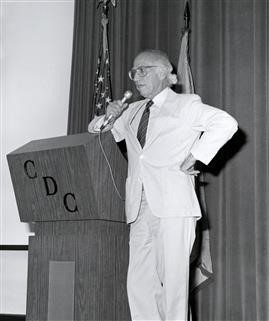The Infertility Org
Infertility Treatment Without Ivf
You found the best source for complete info and resources for Infertility Treatment Without Ivf on the Internet.
After repair, 40-70% of patients have improved semen parameters, while 40% are able to impregnate their partner without other interventions. The prevalence varies widely, being less in developed countries and more in developing countries where limited resources for investigation and treatment are available [2].
Handled with pure professionalism and care from the very start!Table of Contents Are you more of a visual learner? Results of one study investigating a cohort of 315 men revealed changes within the hinge region of SF-1 and no rare allelic variants in fertile control men. The good news is that most cases of male infertility can be resolved either by treating the problem or using fertility treatments.
A lot more Resources For Infertility Problems Pdf

Even more Information About Infertility Treatment Costs
In women, lead poisoning reduces conceptions and increases the risk of fetal wastage. Histologically, Leydig cells are polygonal with eosinophilic cytoplasm. Source : (1).pptx Evaluation of Fertility: A Cornerstone to Improved ... Source : Infertility and its Treatments - PPT Presentation Summary : Infertility and Its Treatments. This test is performed early in the menstrual cycle after bleeding has stopped but prior to ovulation. If you and your partner agree, extra embryos can be frozen and saved to use later.
More Resources For Infertility Treatment Costs
Medication. If you have ovulation problems, you may be prescribed drugs such as clomiphene citrate (Clomid, Serophene), gonadotropins (such as Gonal-F, Follistim, Humegon and Pregnyl), or letrozole. 549 KB Effect of Age on Male Fertility. (PDF, 5 MB) Chapter from textbook, Seminars in Reproductive Endocrinology, 1991. The opening improves the ability of the embryo to implant into the uterine lining. Y Chromosome Deletions in Azoospermic and Severely Oligozoospermic Men Undergoing Intracytoplasmic Sperm Injection after Testicular Sperm Extraction. (PDF, 336 KB) Human Reproduction, 1998. Because ovarian hyperstimulation syndrome does not occur, the patient's response is slow.
Below are Some Even more Info on Infertility Treatment Without Ivf
Large submucosal uterine fibroids may make the uterus' cavity bigger, increasing the distance the sperm has to travel. Blocked tubes Sperm travel in tubes from the man’s testes to the penis. Some people find that joining a support group helps, as it offers the chance to talk to others in a similar situation. However, its value has been questioned because some studies have found no correlation between the presence or absence of viable sperm in the mucus and subsequent fertility. Eating disorders: If an eating disorder leads to serious weight loss, fertility problems may arise. The ovaries can stop working in about 5% of cases. Online support from organizations such as Resolve can be helpful. Seminoma Discovered in Two Males Undergoing Successful Testicular Sperm Extraction for Intracytoplasmic Sperm Injection. (PDF, 807 KB) Human Reproduction, 1995. Ovary Transplantation for Fertility Preservation in Cancer Patients: Fresh and Frozen. (PDF, 1 MB) Chapter 42 from textbook Clinial Infertility, 2010. Women in group II include those with polycystic ovary syndrome and hyperprolactinemia. Women in group II include those with polycystic ovary syndrome and hyperprolactinemia. Excess alcohol consumption: This may lower male fertility. Before performing a tubocornual anastomosis, the patient should have a diagnostic laparoscopy associated with tubal cannulation by hysteroscopy. [139, 140, 141] If one tube remains open, anastomosis is not needed because pregnancy can be achieved in 50% of cases. Contents Definition[edit] "Demographers tend to define infertility as childlessness in a population of women of reproductive age," whereas "the epidemiological definition refers to "trying for" or "time to" a pregnancy, generally in a population of women exposed to" a probability of conception.[8] Currently, female fertility normally peaks at age 24 and diminishes after 30, with pregnancy occurring rarely after age 50.[9] A female is most fertile within 24 hours of ovulation.[9] Male fertility peaks usually at age 25 and declines after age 40.[9] The time needed to pass (during which the couple tries to conceive) for that couple to be diagnosed with infertility differs between different jurisdictions.
Previous Next
See also
Infertility of Tubal Origin
Infertility Treatment Bbc
Movies About Infertility on Netflix